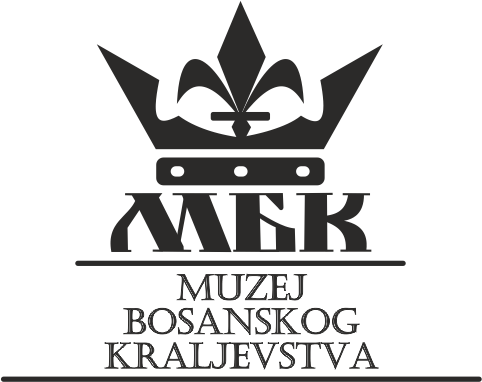Pavle Vukoslavić (before May 25, 1325 – at the earliest 1367) was the son of Prince Vukoslav Hrvatinić and the brother of Vuk and Vlatko Vukoslavić. He was a member of the Hrvatinić kindred, about which relatively little information has been preserved. There are only a few references to him in charters issued by his father and the Bosnian rulers. He appears on the historical stage with a charter, issued in the town of Ključ on May 25, 1325, by which his father Prince Vukoslav, at the request of his subjects, gave freedom to the son of a certain Juraj Hranić, whom Juraj had with his maid Marica. In fact, it was an illegitimate child born out of wedlock between a free man and subject of Hrvatinići, Juraj Hranić, and Marica, a servant on the possession of Prince Vukoslav. In the charter, Vukoslav Hrvatinić invokes God’s wrath on his sons, who were mentioned by name on that occasion: Vlatko, Vuk and Pavle, if they dare to change his will, translated into the text of the charter, after his father’s death.
In the historical sources, Prince Pavle Vukoslavić, as a subject of the Kotromanić dynasty, can only be traced back to 1351, when Ban Stjepan II Kotromanić and his brother Prince Vladislav issued a charter to him and his brother Prince Vuk. On that occasion, possessions in the counties of Banica and Vrbanja were confirmed as their heritage. Their brother Vlatko had possessions in these counties as well, he held the center in the county of Banica, and the town of Ključ, but the fate of Kotor in Vrbanja is unknown at this time. The above-mentioned charter was issued as a reward for the faithful service that Prince Vuk performed towards the Bosnian ban, fighting in his military campaigns, in the period from 1337 to 1350.
The last reference to Prince Pavle Vukoslavić can be found in the charter of Ban Tvrtko issued to him in 1367 in order to restore the vassal relationship. The Bosnian nobility had overthrown Ban Tvrtko a year earlier in a rebellion which brought his brother Vuk or Vukić to the throne. Meanwhile, Ban Tvrtko was forced to retreat to Hungary and request assistance from King Ludovic I. The dethroned ban returned to Bosnia with the support of the Hungarian government and gradually regained authority over the rebellious nobility, so he again placed Prince Pavle under his sovereignty with the above-mentioned charter.
In historiography, the ban of Croatia and Dalmatia Pavle of Peći (today Pećigrad near Cazin) was connected with Prince Pavle Vukoslavić, since in 1394 he appeared in the sources as “Pavle son of Pavle of Peći”, which opened up space for the assumption that he was his son. This would ultimately mean that Prince Pavle Vukoslavić, together with his brother Prince Vlatko, left the Bosnian ban in 1363 and emigrated to Hungary, where his descendants continued to live later. Nevertheless, the principal counterargument to this understanding is the aforementioned charter issued to Prince Pavle by Ban Tvrtko in 1367, which clearly shows that he was integrated into the Bosnian feudal hierarchy during this period.
Bibliography:
- Ćirković, Sima: Istorija srednjovekovne bosanske države, SKZ, Beograd, 1964.
- Ćošković, Pejo: “Hrvatinići (Horvatići, Stipančić Hrvatinić, Stipanići, Stjepanići), (velikaški rod)” in: Hrvatski biografski leksikon, V (Gn-H), Leksikografski zavod Miroslav Krleža, Zagreb, 2002, 725-739.
- Engel, Pál: “Neki problemi bosansko-ugarskih odnosa”, Zbornik odsjeka za povijesne i društvene znanosti HAZU 16, Zagreb, 1998, 57-72.
- Isailović, Neven: “Povelja kneza Vukoslava Hrvatinića kojom daje slobodu sinu Jurja Hranićevog i Marice”, Građa o prošlosti Bosne 10, Banja Luka, 2017, 69-89.
- Ječmenica, Dejan: “Povelja bana Tvrtka knezu Pavlu Vukoslaviću”, Građa o prošlosti Bosne 4, Banja Luka, 2011, 21-29.
- Mrgić-Radojčić, Jelena: “Povelja bana Stjepana II Kotromanića knezu Vuku i Pavlu Vukoslaviću”, Stari srpski arhiv 1, Laktaši, 2002, 79-92.
- Mrgić-Radojčić, Jelena: Donji Kraji. Krajina srednjovekovne Bosne, Filozofski fakultet u Beogradu-Filozofski fakultet u Banjaluci-Istorijski institut u Banjaluci, Beograd-Banja Luka, 2002.
- Smičiklas, Tadija: Codex diplomaticus regni Croatiae, Dalmatiae et Slavoniae, IX, JAZU, Zagreb, 1911.
- Šišić, Ferdo: Vojvoda Hrvoje Vukčić Hrvatinić i njegovo doba, MH, Zagreb, 1902.
- Thallόczy, Ljudevit: “Istraživanje o postanku bosanske banovine sa naročitim obzirom na povelje kӧrmendskog arkiva”, Glasnik Zemaljskog muzeja 18, Sarajevo, 1906, 401-444.
- Thallóczy, Ludwig von: Studien zur geschichte Bosniens und Serbiens in mittelalter, Duncker&Humblot, München-Leipzig, 1914.
The Hungarian National Archives in Budapest (Magyar Nemzeti Levéltár Országos Levéltára) in the so-called Pre-Mohács collection (Mohács Előtti Gyűjtemény) signatura Diplomatikai Levéltár (DL) 66502.
Source of signature: Isailović, Neven: “Povelja kneza Vukoslava Hrvatinića kojom daje slobodu sinu Jurja Hranićevog i Marice”, Građa o prošlosti Bosne 10, Banja Luka, 2017, p. 75.
